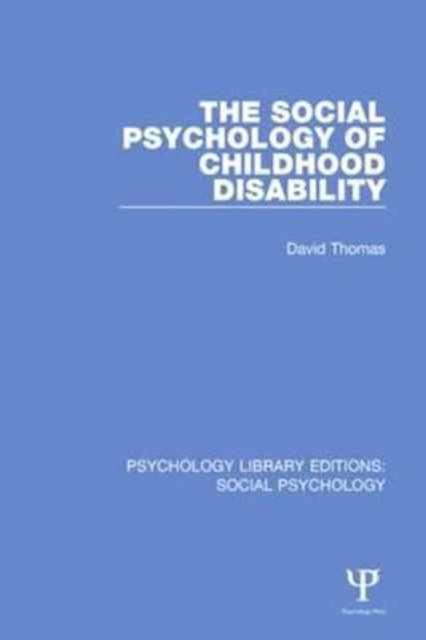
- Retrait gratuit dans votre magasin Club
- 7.000.000 titres dans notre catalogue
- Payer en toute sécurité
- Toujours un magasin près de chez vous
- Retrait gratuit dans votre magasin Club
- 7.000.0000 titres dans notre catalogue
- Payer en toute sécurité
- Toujours un magasin près de chez vous
Description
'Some years ago I read the phrase "the spontaneous revulsion to the deformed". The phrase seemed to be both potent and provocative: Was there a spontaneous revulsion to disabilities in children or did such conditions evoke a more compassionate response?'
Originally published in 1978, the problems of the disabled were no longer confined to the medical and educational professionals, but had become the concern of the community as a whole. Using terminology very much of the time, the author shows how attitudes towards different kinds of disability had developed at the time; they varied both regionally and by social class, sometimes calling into question the accepted 'facts' about the distribution of a particular condition. Most importantly, the author examines these attitudes together with many other social and psychological factors in relation to their impact on the social behaviour and developing self-image of the disabled child. It becomes clear that the dangers of categorization and the difficulties in overcoming stigma have a profound influence on the education and socialization of disabled children.
This book will be of historical interest to students and teachers of psychology, education, social work and rehabilitation; and it will provide insight for parents and all those concerned with the care and development of the disabled child about how far we have come.
Spécifications
Parties prenantes
- Auteur(s) :
- Editeur:
Contenu
- Nombre de pages :
- 176
- Langue:
- Anglais
- Collection :
Caractéristiques
- EAN:
- 9781138853324
- Date de parution :
- 01-06-17
- Format:
- Livre broché
- Format numérique:
- Trade paperback (VS)
- Dimensions :
- 156 mm x 233 mm
- Poids :
- 452 g

Les avis
Nous publions uniquement les avis qui respectent les conditions requises. Consultez nos conditions pour les avis.






